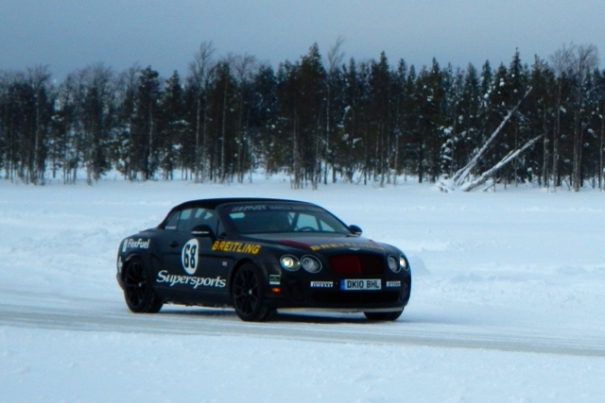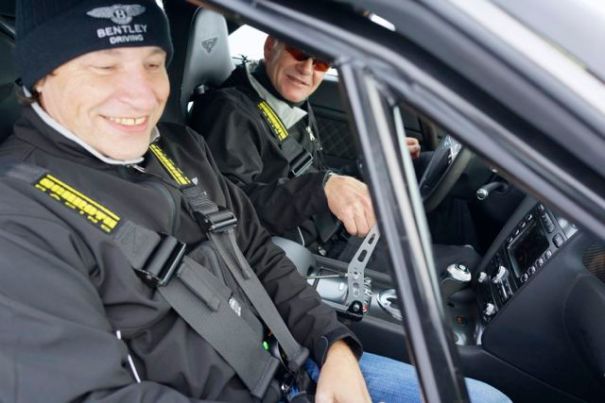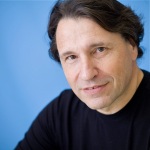Coming in from the freezing cold of the night into the tent made my goggles fog up. That and dim light of the few logs burning at the fireplace in the center made it hard to see. There were a few benches and people have gathered to sit on reindeer furs. The sound of a soft beating drum and the light crackle of the fire was soon mixed with a low voice humming a melancholic melody. They do say that the lack of sunlight during winter above the Arctic circle makes people depressive. My eyes adjusted and could now see the old man in reindeer furs beating the drum and humming his tune. His eyes were closed and he ignored us. He seemed in trance.
Then someone closed the opening in the tent and the great shaman of Kuusamo began to speak in the old Sami dialect:
With that he handed out little cups with a white liquid. We drank and it tasted sweet. I wondered.
The next day I sat down with another shaman, but this time I was strapped in and a 600 HP engine roared to life. We rolled out onto the ice of the lake and with no further delay he spun the car around its center and off we went. We were past a 100 mph in a few seconds and I saw the woods come closer at the edge of the lake with frightening speed. He was driving with one hand while telling me that he started driving at the age of seven. His father had told him to not get into trouble with the police but that was it. He applied the brakes and the quarter-inch rally spikes tore up the two feet thick ice of the lake. I hardly saw him move the wheel but the car tilted left only to jerk right a moment later when he applied the throttle. We were jolted forward but because of the ‘Scandinavian flick’ we kept going sideways until the next right turn appeared. I could sense a moment of less power and with no more than a tug at the wheel the car changed load to the opposite drift into the next turn. Both the rear and the front of the car were throwing up snow from the edge of the cleared path on the ice track.
I finally managed to say something through my amazement. I had practiced this for a couple of days and kind of gotten the hang of it but I now felt utterly sobered and disillusioned. This was incredible perfection and control in an environment that should not allow such action. “How in the world do you keep the car so precisely in the drift? I always lose control and spin out.”
The great shaman just shrugged as he presented me with another snippet of wisdom: “You spin out if there is no force holding the car in place. When you roll straight it is the friction of the tire. When you drift there is nearly no friction and the only thing that keeps you going around the corner is the forward push of your tires. Without power you lose it. It is a balance of power and pointing the power in the right direction. You are only in control when you are under power!”
That made a lot of sense and I realized that this was another truism for life. Let go and stop giving direction forward and you will lose it. In your private endeavors, in your relationships and obviously in business alike. Drifting was not about floating but it was about applying power and giving it direction.
“I often feel that I will be too fast for the next turn and thats why I reduce throttle and then the car spins out,” I asked. He nodded smiling and answered: “How you make the next turn mostly depends on how you come out of the previous one. For the load change from one side to the other you must be in full control, which means you must not come off power, but just reduce it enough so that you destabilize the drift and the car will react to the wheel.” Again is sounded so logical that I did not understand why I had trouble doing it.
He hit the brake hard and the spikes dug into the ice just before the 180 turn. I noticed that he did his Scandinavian flick after the breaking only. He said: “Break early and hard when you are straight until your speed is right. Point shortly into the turn and then destabilize the rear by steering outside. Wait until the car comes around and then apply power to take full control. Little power, little control, more power, more control!” He grinned at me, all the while steering with the left hand and kind of showing me the cars movements with his right. It was absolutely no effort to him. He had so much experience that he reacted completely automatically to whatever the environment threw at him. No surprise that he had been four times World Rallye Champion …
Then the clear thinking actually came to me!
I had met the great Shaman of Kuusamo. Two very different people, but both with the same clarity of thought and open hearts to their surroundings. One an incredibly old goat herder who was the most happy when with his reindeer and in harmony with nature. The other Juha Kankkunen who is still the most happy when in harmony with a car and a road. But the harmony did not come from learning in books, or following rules and procedures. It came from listening, feeling, clear thoughts, open hearts and 10.000 hours of practice.
People do not become experts through (taught) knowledge, or through experience or natural talent. Despite all the explanations that satisfy my brain’s need for narrative, I still had a hard time doing it myself and when I failed I got worse and worse. Experts are usually pretty poor in explaining exactly what they do. But when I was watching the expert do his thing I suddenly was able to copy some aspect of his expertise. I usually got it in a couple of sessions or I better stopped. Just practicing did not make it better as I got too tired and frustrated. I needed another infusion of expertise from the expert himself. It is this kind of teaching mode that the collaborative working style of ACM suggests and supports.
If you have not done it yourself – ANYTHING – you can study all you want and get as many degrees as you like – you will be an outsider and repeating other people’s knowledge without really knowing what it means. You certainly won’t be able to teach the real thing. There is nothing wrong with getting a great education, but you need to get out into the school of hard knocks, to experience the value of failure, and the adrenalin of daring and the dopamine of winning that will put you in harmony with the world. That harmony will make you wise enough to teach or consult or manage. Nothing else will.
Yup, the Nike slogan applies to life: “Just Do It!”



…and we are back at learning by doing is more powerful than anything else. Theory may help a lot but will never replace doing. Some may be so powerful to do it already in mind but that affords high mental skills…
LikeLike
Max
I am in total agreement with you. What doe we really own? What is really ours? It is that which becomes us through experience.
Back in the days of Aristotle there was a distinction made between techne and episteme. Techne refers to know-how through the school of experience. Episteme refers to theoretical knowledge.
Episteme has taken over the Western World and I say we are the poorer for it. There is a profound difference between talking about driving and being expert in talking about. And being able to drive car. This is often forgotten, say in job interviews. Or when hiring consultants.
It becomes even more complicated. What is forgotten is that theory is always and best an approximation of ‘reality’. And as such theory is misleading ALWAYS to some degree. That means that there is stuff that theory rules out or ignores but which is present and possible in the world. It also means that there is stuff that simply will not work in the real world and which theory says or suggest will work.
Thanks for a great post.
maz
LikeLike
Maz, I have written about illusionary theories so much in the last ten years that my fingers hurt. I am not sure when it will change. There are at least better known people like me also going in that direction, for example Nassim Taleb:
All the best, Max
LikeLike
This is a great article and I fully agree. Especially the conclusion at the end is so true!
Unfortunately not all of us have an empty lake and a car which is perfectly adjusted to the environment to practice with plenty of power. Very often it seems that we are driving an old, weak car during rush hour in New Delhi without an insurance.
If we map this example to our daily business, what is the conclusion? Do we have to invest more time and money in test- and training facilities? Shall we hire the best instructors for our staff? Or is there a simpler way to get the knowledge across? How much can ACM and tools like “user trained agent” help us here?
LikeLike
Hi Andreas, thanks for commenting.
Yes, people to people training is the most effective in a coaching mode while the student is practicing. Just listening to theory is little effective.
The ACM approach basically has a the ability to mentor process/case performers through the usage patterns of more experienced people. When new performers try the suggestions of the User Trained Agent and they work then they basically received the knowledge transfer from the people who did it before. The alternative is a coaching mode in which a more experienced performer can watch the work of a newbie and give reocmmendation via the social communications features of ACM. The UTA is a lot more effective in the long run as the trainer does not have to be there in person.
Experts often have a hard time explain WHY they do something. The UTA does not even try to identify the why it just learns that certain events and certain actions are connected to certain process/case patterns. This is how the brain actually works too. The main problem is that it makes people nervous to not know WHY some things are recommended. But in the end, even if one recommendation was wrong (as it is often without ACM) then it will quickyl correct itself in the next few executions as other performers reject it to do something else.
The problem is that both IT and business are not really ready yet for such advanced technology. They think silly causal predictive analytics that build an a huge amount of model assumptions and formulae are more effective. They could not be more wrong. It is as I wrote before ‘naive intervention’.
All the best, Max
LikeLike
The consequenes of this trip to Finland you can read on my Powertec Rallycross Racing blog: http://mjp-powertec.com
LikeLike